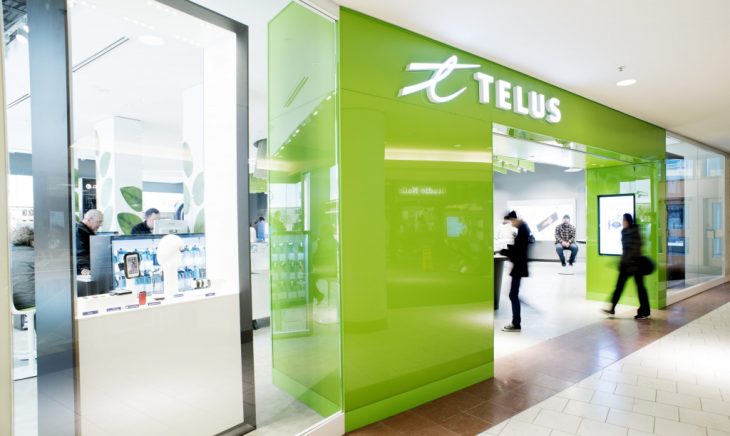
By Ahmad Hathout
Telus CEO Darren Entwistle said Friday that Canadians value reliability over price, as he lamented the wireless industry’s trend of price matching in a race to the bottom he said he doesn’t understand.
“Why can’t we have a price premium if we have better product features, but more particularly better customer service for our clients,” he said on the company’s first quarter earnings conference call. “Why do we always have to price match, price match, price match in a race to the bottom? Why can’t we build the culture of psychology, a set of competencies to be able to sell at a premium? That’s a transformation that this organization is working ardently to achieve.
“We know empirically from customers that customers value reliability more than affordability, and so the opportunity is out there for us,” he added.
Over the last few quarters, the wireless industry has seen notable dips in average revenue per user (ARPU) and higher churn metrics that have been largely attributed to intense competition and enduring promotional deals. Quebecor’s wireless carriers, for example, have been playing in relatively low ARPU territory as a subscriber capture strategy, with the hope that bundling will keep customers locked in.
This quarter, Telus saw its mobile phone ARPU decline 3.7 per cent to $57.13, but its churn was down to 1.06 per cent, a gain of 0.07 points. That was attributed largely to the “ongoing focus on customer retention and our industry-leading service and network quality, along with successful promotions and bundled offerings.”
At the same time, Entwistle said Friday the company has been underperforming on said bundling, which he said can be a vehicle for a stable ARPU.
“The one thing that is a secondary consideration is that when you get better churn through better bundling, you also get better ARPU resiliency, which supports what you want to do on the network revenue growth front,” he said.
Telus added fewer overall mobile phone customers (it doesn’t differentiate between post and prepaid) in 20,000 for the quarter, a 56 per cent decrease from the same quarter last year. The total base increased by three per cent to roughly 10 million and change.
Mobile network revenue was down slightly, by one per cent, to $1.73 million, but saw mobile equipment and other service revenues up nine per cent to $524 million.
Entwistle said the telco can do a better job of bringing artificial intelligence into the equation to solve for optimum pricing decisions, because the company has historically “left a ton of money on the table.”
“If we … leverage our AI capabilities within the area of price optimization with lifetime revenue economics, we will make better decisions and not leave that money on the table,” he said. “And that’s a tremendously smart thing to do, and it fits well with our capability set. So that’s where I think we need to go in the future. And that’s just AI on price optimization.
“Imagine what it can do on copilot bundling opportunities and the like. So that’s where I think this industry needs to go over the next three to five years. And if the industry doesn’t go there, TELUS will and we’ll be the differentiated benefit and enjoy those benefits for that.”
The telco also added 21,000 new internet subs this quarter, 30 per cent lower than last year, for a total base that increase by two per cent to roughly 2.7 million. It added 42 per cent more subscribers, or 27,000, in the television space this quarter, for a total base that grew eight per cent to roughly 1.4 million. And it lost 13,000 landline subs, 63 per cent more than last year, for a total base that decline four per cent to about one million.
The company had a record quarter for connected devices, adding 148,000 net new subscribers inside the three months, an increase of nearly 50 per cent. Telus attributed that primarily to expanded internet of things (Iot) offerings in industries including transportation, security, healthcare, smart buildings and cities, energy, retail and agriculture.
The company’s health segment saw 12 per cent higher revenues and other income for the quarter, at $473 million, with a seven per cent increase in healthcare lives covered, at 76.5 million lives covered by quarter-end.
Overall, the telco had a three per cent increase in revenue, up to roughly $5 billion in the quarter that ended on March 31 and compared to the same period last year. That’s thanks in part to a $114-million boost in service revenue, including from the mobile, residential internet, security and automation, and television segments; and from equipment revenues that increased by $38 million on device sales.
Net income over that period was up $161 million to $301 million.



